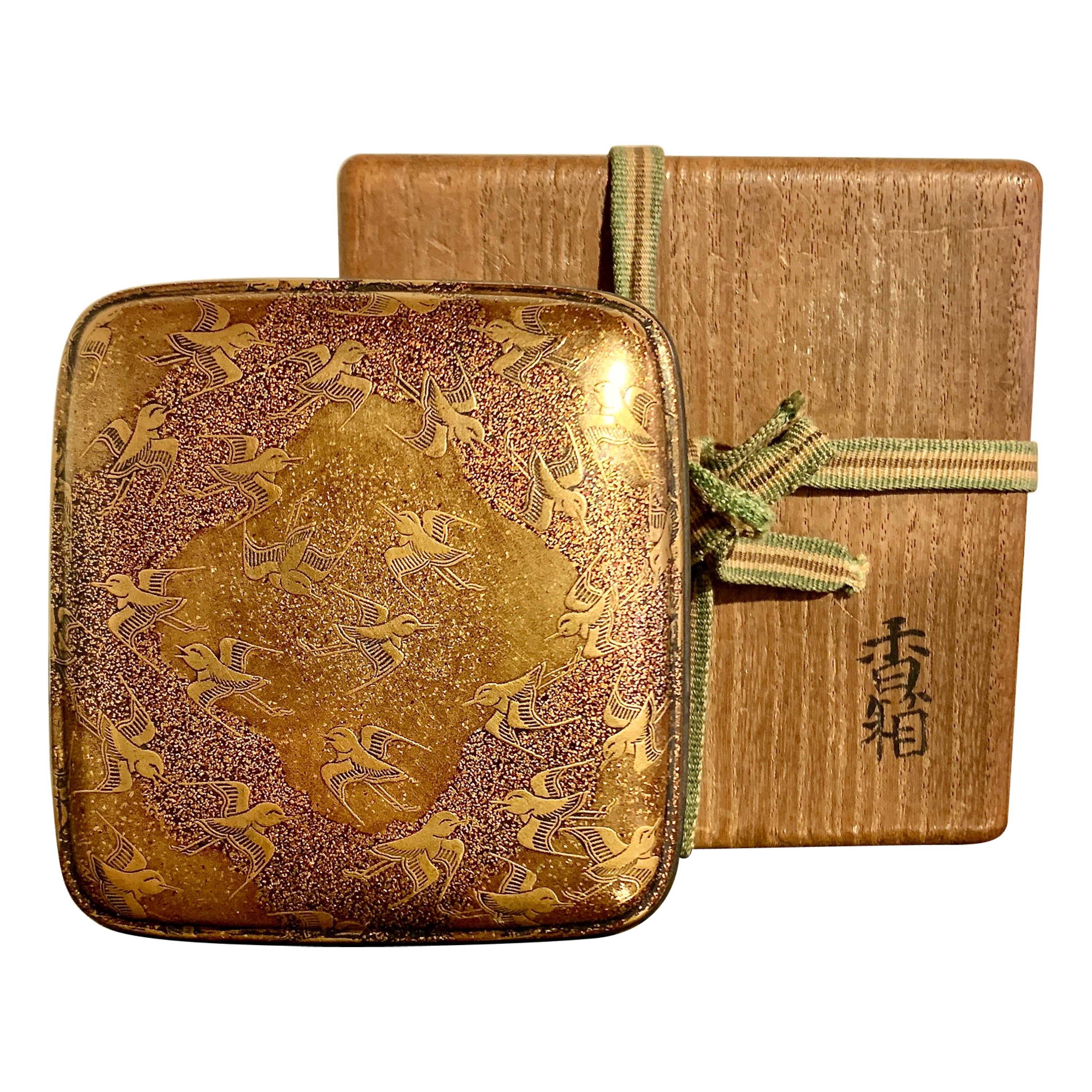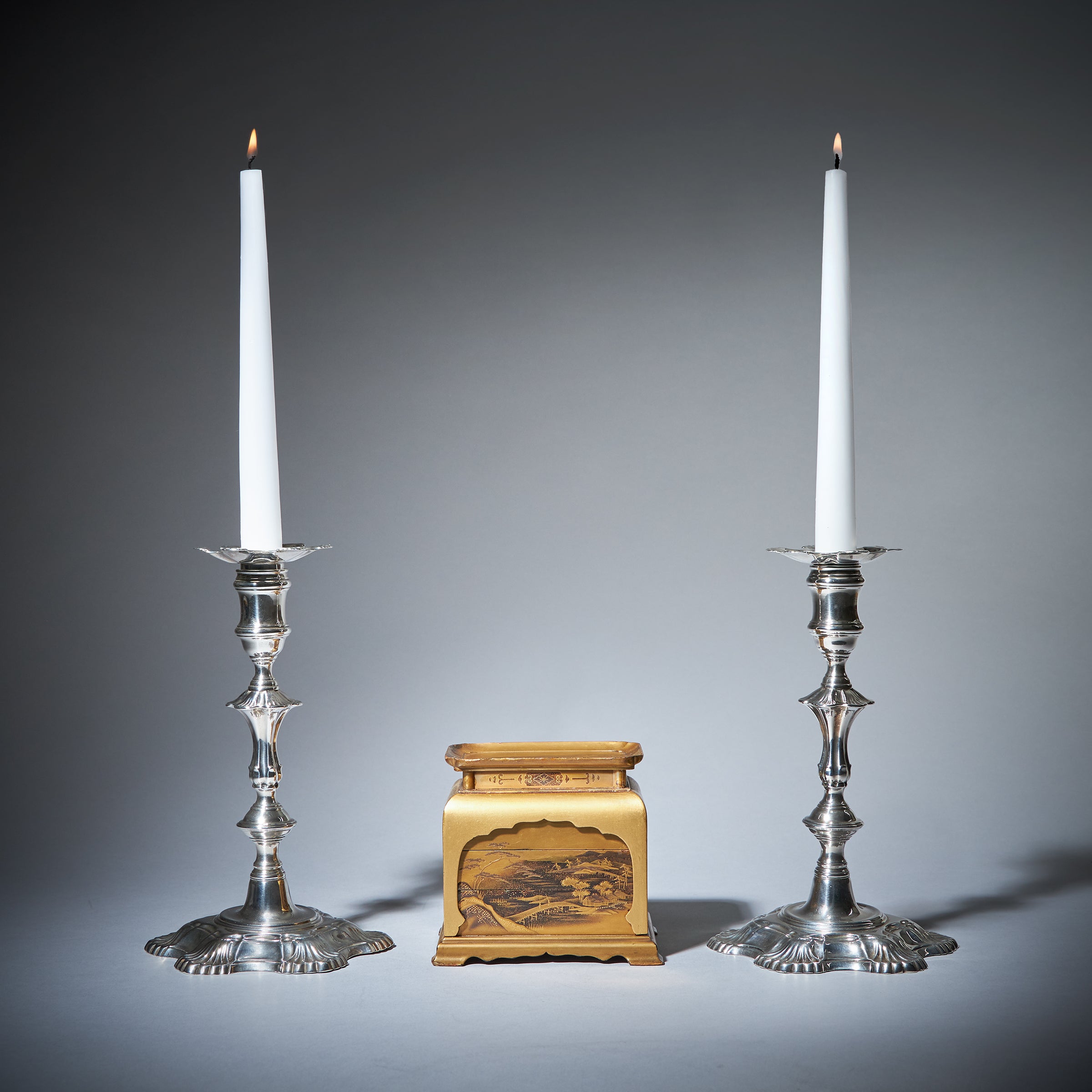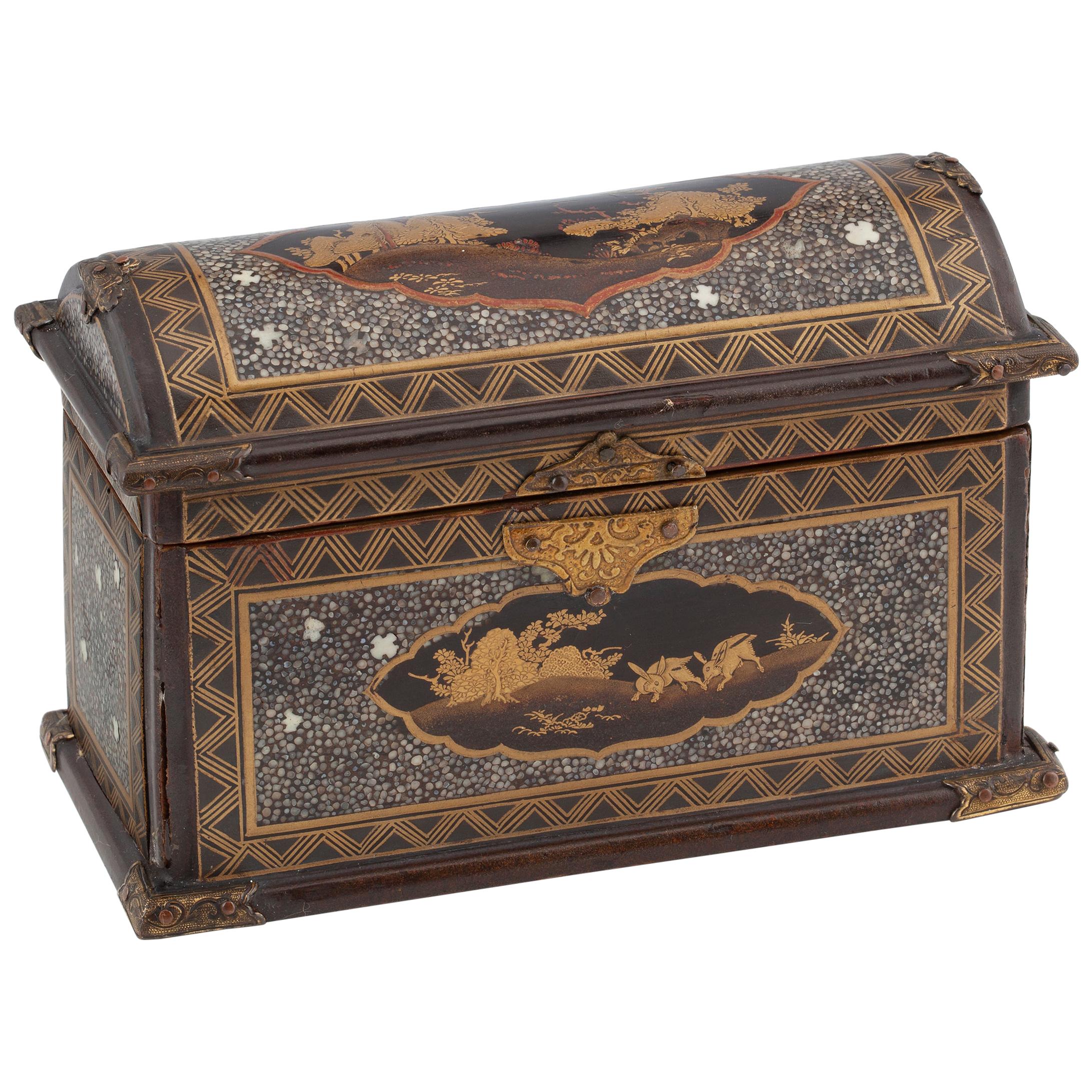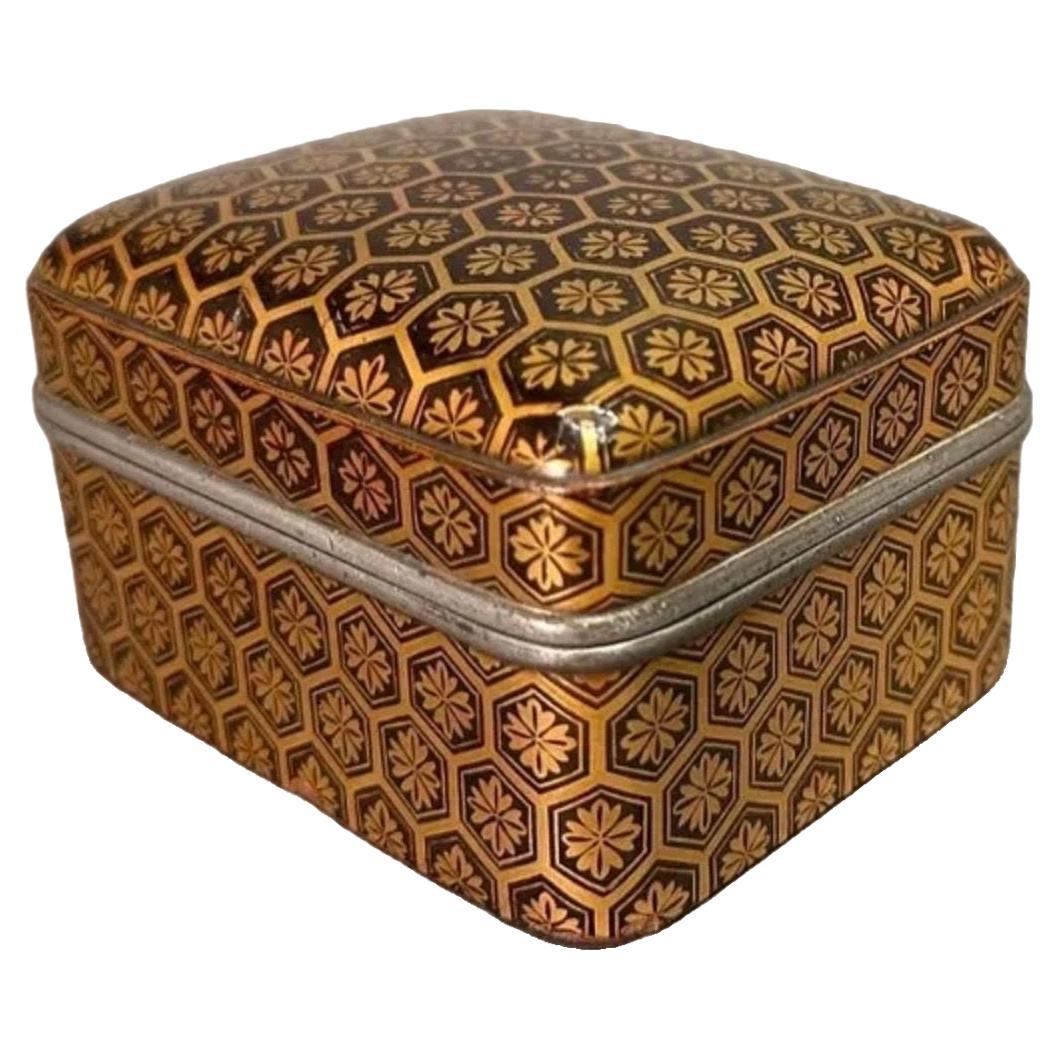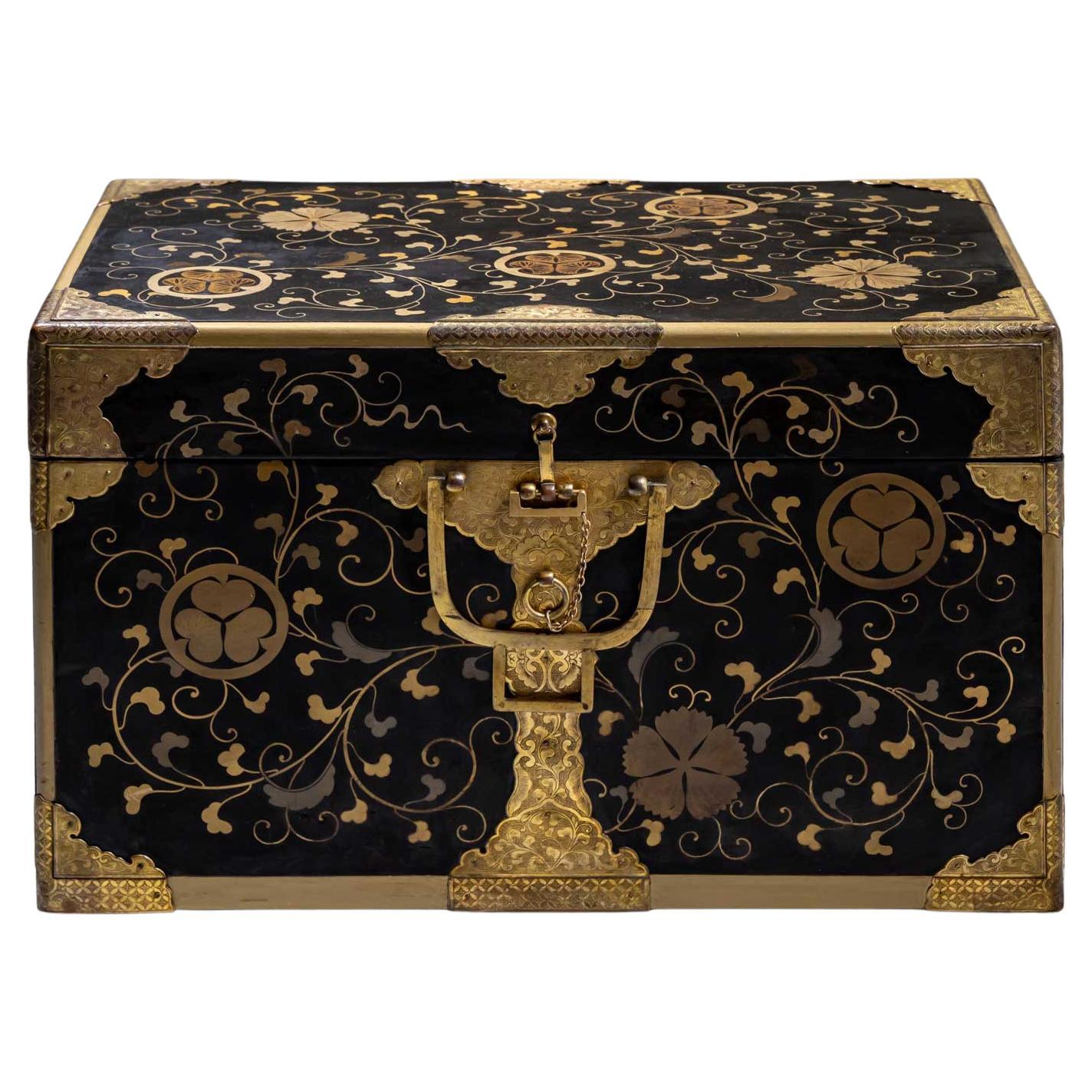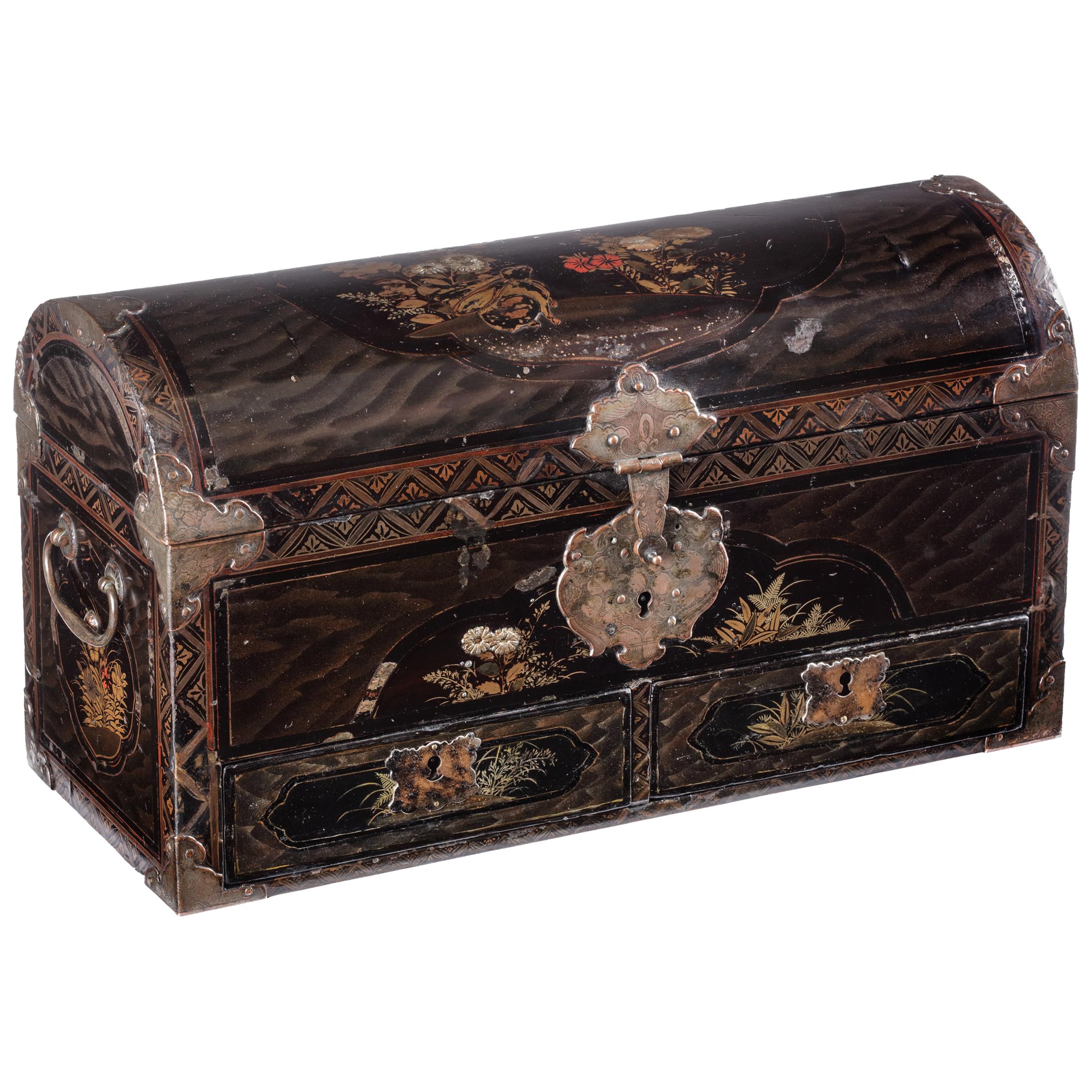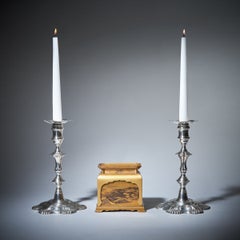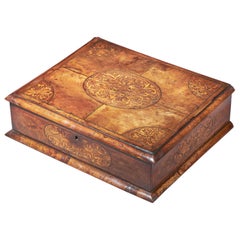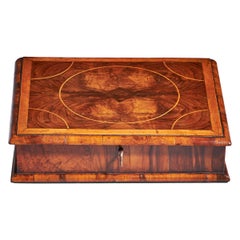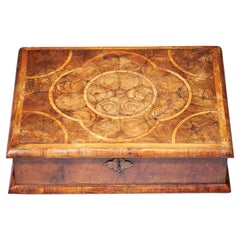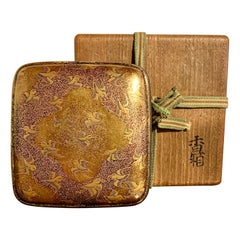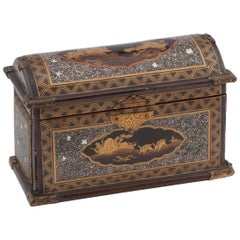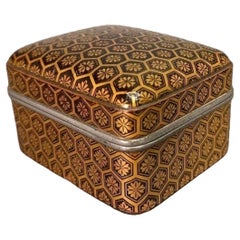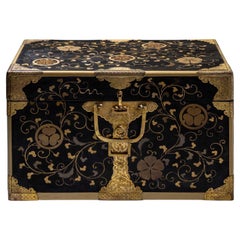Items Similar to Important Early Edo Period 17th Century Miniature Japanese Lacquer Cabinet
Want more images or videos?
Request additional images or videos from the seller
1 of 18
Important Early Edo Period 17th Century Miniature Japanese Lacquer Cabinet
About the Item
A Rare and Important 17th Century Miniature Japanese Lacquer Cabinet, 19 cm H, 17cm W, 16.5cm D.
The exquisitely decorated cabinet depicts fine floral raised scenes to each side. lacquered wood (Urushi), decorated with gold lacquer (Maki-e) and gilt mounts. Raised on an intricate shaped apron.
The cabinet doors fitted with finely engraved strap hinges and an impressive central lock plate opening to a breathtaking interior of two long, two short, a further two long drawers and a square drawer fitted with an engraved lock pate. Each finely decorated and moulded retaining the original ring pull handles.
It should be noted that this miniature cabinet is one of the finest examples to be discovered, in superb original condition and is undoubtedly of museum grade.
- Dimensions:Height: 7.49 in (19 cm)Width: 6.7 in (17 cm)Depth: 6.5 in (16.5 cm)
- Materials and Techniques:Lacquer,Japanned
- Period:
- Date of Manufacture:1670
- Condition:Wear consistent with age and use. Superb original unrestored condition.
- Seller Location:Oxfordshire, GB
- Reference Number:1stDibs: LU4936233969342
About the Seller
5.0
Recognized Seller
These prestigious sellers are industry leaders and represent the highest echelon for item quality and design.
1stDibs seller since 2019
24 sales on 1stDibs
Typical response time: 19 hours
Associations
LAPADA - The Association of Arts & Antiques Dealers
- ShippingRetrieving quote...Shipping from: Faringdon , United Kingdom
- Return Policy
Authenticity Guarantee
In the unlikely event there’s an issue with an item’s authenticity, contact us within 1 year for a full refund. DetailsMoney-Back Guarantee
If your item is not as described, is damaged in transit, or does not arrive, contact us within 7 days for a full refund. Details24-Hour Cancellation
You have a 24-hour grace period in which to reconsider your purchase, with no questions asked.Vetted Professional Sellers
Our world-class sellers must adhere to strict standards for service and quality, maintaining the integrity of our listings.Price-Match Guarantee
If you find that a seller listed the same item for a lower price elsewhere, we’ll match it.Trusted Global Delivery
Our best-in-class carrier network provides specialized shipping options worldwide, including custom delivery.More From This Seller
View AllSigned Mid 19th C. Edo/Meiji Period Miniature Lacquer Stacking Cabinet, Japan
Located in Oxfordshire, United Kingdom
The highly decorated tray in the form of a table frames a series of three stacking boxes, a further three lidded boxes and a tray concealed within, raised on ogee bracket feet.
This...
Category
Antique 19th Century Japanese Meiji Lacquer
Materials
Lacquer
17th Century Figured Walnut and Seaweed Marquetry Lace Box
Located in Oxfordshire, United Kingdom
A fine and extremely rare figured walnut and seaweed marquetry 'lace box', circa.... let’s break it down - Seaweed marquetry first appeared in Englis...
Category
Antique 17th Century English Baroque Decorative Boxes
Materials
Walnut
Fine William and Mary 17th Century Olive Oyster Lace Box
Located in Oxfordshire, United Kingdom
A fine late 17th-century olive oyster 'Lace Box' of small proportions, circa 1680-1690, England.
The cross-grain moulded and holly banded top is finely veneered in hand-cut veneers ...
Category
Antique 17th Century English William and Mary Decorative Boxes
Materials
Olive
17th Century William and Mary Olive Oyster Lace Box, Circa 1680-1700
Located in Oxfordshire, United Kingdom
A fine and rare 17th-century William and Mary period olive oyster lace box of perfect proportions. 1680-1700, England
The cross-grain moulded top is entirely covered in well-place...
Category
Antique 17th Century English William and Mary Decorative Boxes
Materials
Olive, Holly
Mid 17th Century Dutch Engraved Silver Wedding Casket or knottekist, Circa 1660
Located in Oxfordshire, United Kingdom
A museum-grade mid-17th century Dutch silver marriage casket or knottekistje, circa 1660.
Raised on solid silver bun feet the miniature casket is profusely engraved to all faces depicting a courting couple and architecture entwined in scrolling foliage. The reverse of the casket depicts the last supper, however, if you look closely, you can see a boy stealing food or wine from underneath! Possibly, this is the courting gentleman showing that he had a sense of humour.
The scratch lined moulded top is surmounted with an intricate handle (once gilt) and floral patera to the centre. There are two inscriptions each within a cartouche 'In Lÿfde Beltact het al' and 'Getrouw tot in den doot' which loosely translates to 'faithful until the death' and 'love is everything'.
Wedding caskets...
Category
Antique 17th Century Dutch Baroque Decorative Boxes
Materials
Silver
Large William and Mary 17th Century Inlaid Olive Oyster Lace Box, Circa 1690
Located in Oxfordshire, United Kingdom
A fine and rare large parquetry inlaid 17th-century William and Mary period olive oyster lace box. 1680-1700, England
The cross-grain moulded top is ent...
Category
Antique 17th Century English William and Mary Decorative Boxes
Materials
Oak, Olive, Ebony
You May Also Like
Japanese Lacquer Incense Box, Kogo, Momoyama or Edo Period, 16th/17th Century
Located in Austin, TX
A wonderful Japanese lacquer incense box, kogo, with a design of plovers in flight, late Momoyama or early Edo Period, circa 1600, Japan.
The small box, called a kogo, was used to s...
Category
Antique Early 17th Century Japanese Edo Lacquer
Materials
Gold, Pewter
Unique 17th Century Miniature Japanese Namban Lacquer Miniature Dollhouse Chest
Located in Amsterdam, NL
A unique and exceptional Japanese miniature or dollhouse export lacquered chest
Kyoto, circa 1620-1640
The chest of rectangular shape with a domed lid, decorated in Transition-style, in gold hiramaki-e on a black background within reserved lobed cartouches decorated with landscapes animated with birds and rabbits, on a shagreen or samegawa background. The borders are decorated with geometric friezes, the box with gilt-copper mounts, the interior decorated in red lacquer.
Measures: H 9.2 x W 14.5 x D 7.2 cm
This miniature is of exceptional quality and a perfect copy of the famous large size Transition-style coffers. It was most likely ordered by a Dutch lady for her dollhouse (poppenhuis), like the famous Petronella Oortman (1656-1716) doll-house, which is now one of the highlights in the collection of the Rijksmuseum Amsterdam, or Petronella Oortmans-de la Court’s (1624-1707) dollhouse in the collection of the Centraal Museum Utrecht. Sara Rothé of Amsterdam in 1743 ordered a miniature black lacquered ivory tripod table with gold chinoiserie decoration by Jurriaan Buttner (Monika Kopplin, European Lacquer, 2010, p. 56).
Other Japanned dollhouse...
Category
Antique 17th Century Japanese Edo Lacquer
Materials
Shagreen, Cypress
A Japanese Edo Period Lacquer Kogo (Incense) Box, late 17/early 18th Century
Located in Spencertown, NY
Early Japanese Lacquer Incense Box (Kogo) Late 17thc. Of rectangular form with soft corners, decorated with a diaper pattern in gold lacquer on a brownish black ground, with pewter r...
Category
Antique 17th Century Japanese Edo Decorative Boxes
Materials
Pewter
Japanese Lacquer Chest, Edo Period
Located in Greding, DE
Small rectangular Japanese chest with gold lacquer decoration in the form of leaf tendrils. The chest is decorated with cut-out and ornamentally engraved fittings on the corners and ...
Category
Antique 18th Century Japanese Edo Decorative Boxes
Materials
Brass
Fine Japanese Namban Lacquer Jewelry Casket, 17th Century
Located in Amsterdam, NL
Japanese Namban lacquer transition-style coffer with two drawers
Kyoto/Nagasaki, circa 1650
The cartouches with gilt and red decorations of leaves...
Category
Antique 17th Century Japanese Edo Lacquer
Materials
Cypress
Rare Japanese Sumi-E Lacquer Inro Yamada Jokasai Edo Period
Located in Atlanta, GA
A three-case lacquered Inro by Yamada Family circa 18th-19th century Edo period. The inro with slight rounded form is of Kano style and vividly depicts a dragon slithering among the ink clouds on a gold background. Sumi-e togidashi (ink togidashi) technique, in combination with Hiramaki-e, were employed to create the dreamy ambience of this piece. The dragon has a painterly appearance inspired by Chinese ink painting that was often seen on the Japanese folding screens. The back of the Inro was sparsely decorated with the shifting patterns of the darkening clouds with an emphasis on the space intentionally left empty. Jokasai was signed to the base. On the front of the inro there is another miniature signature Hakugyoku Hogen, which is one of names used by Kano Michinobu (1730-1790). The dragon is evidently one of his designs (see reference below).
Established by a member of Yamada family in the 17th century, the clan was one of the most prominent lacquer artisanal family for the next 200 years until the end of Edo period in the 19th century. Most members signed their work simply with Jokasai making the identification of the individual artists somewhat impossible. The current Inro on offer, compared to many other pieces by Jokasai, has an uncommon Kano style done in Sumi-e togidashi.
Another unusual feature of this piece is that the interiors of the inro was decorated with an interesting gold mosaic inlays (kirigane) on a dark lacquer background, giving it a jewel like quality.
For another Inro by Jokasai of a similar style using Sumi-e togidashi but depicts a tiger, see Wrangham collection, no.353, which was offered for sale as lot 256 in Bonham's London Auction: The Edward Wrangham Collection of Japanese Art Part I. 9 Nov 2010.
For an ink scroll...
Category
Antique 18th Century Japanese Japonisme Lacquer
Materials
Wood, Lacquer
Recently Viewed
View AllMore Ways To Browse
Antique Miniature Plates
Japanese Lock
17th Century Gold Ring
Japanese Lacquer Box With Drawers
Acid Wash Mirror
Antique Lime Boxes
Brass Embossed Wood Box
Bronze Trinket Box
Chinese Inlaid Box
Kashmir Wood
Mother Of Pearl Perfume
Persian Inlaid Wood
Rosewood Writing Slope
Sterling Silver Trinket Box
Vintage Grape Boxes
Antique Baccarat Crystal Box
Antique Pencil Holder
Brass Butterfly Box
